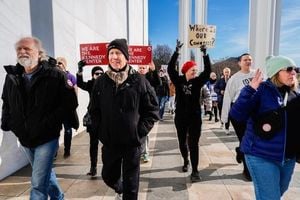In the humid heart of the Amazon, the city of Belém, Brazil, pulsed with anticipation as it hosted the COP30 United Nations climate summit. Over two weeks ending November 27, 2025, the conference drew the largest gathering of Indigenous leaders in COP history, setting the stage for what many hoped would be a turning point in global climate action. The summit delivered a flurry of historic commitments—some hailed as breakthroughs, others criticized as falling short—and was quickly followed by a dramatic political reversal at home, leaving Brazil’s environmental future hanging in the balance.
At the core of COP30’s outcomes was the adoption of the Intergovernmental Land Tenure Commitment (ILTC), a pledge to recognize Indigenous land tenure rights over 160 million hectares (395 million acres) across tropical forest countries by 2030. According to Mongabay, Kleber Karipuna, executive coordinator of the Articulation of Indigenous Peoples of Brazil (APIB), called this “one of the most positive outcomes we hoped to achieve at COP30.” In Brazil alone, 63 million hectares (156 million acres) of Indigenous lands are now slated for protection, management, and land ownership.
But the summit’s ambitions didn’t stop there. The Forest Tenure Funders Group (FTFG) announced a renewed $1.8 billion pledge to support Indigenous, local, and Afro-descendant communities in securing land rights over the next five years. Brazilian President Luiz Inácio Lula da Silva signed decrees for 28 quilombos—rural Afro-Brazilian communities—recognizing them as areas of social interest and advancing the process of titling these territories. Additionally, the demarcation of 10 new Indigenous territories was announced, covering diverse peoples and biomes across the country.
These commitments, while celebrated, were tempered by a sobering reality: implementation remains a daunting challenge. As Joan Carling, executive director of Indigenous Peoples Rights International, told Mongabay, “This is a milestone achievement, but the next battle is its implementation on the ground.”
Financial pledges featured prominently at COP30. Brazil launched the Tropical Forest Forever Facility (TFFF), raising $6.6 billion toward a targeted $125 billion from public and private investors and philanthropies. Under this mechanism, countries maintaining intact tropical forests could receive up to $4 per hectare annually, with at least 20% of those payments earmarked for Indigenous and local communities. Yet, more than 50 Indigenous and civil society organizations raised concerns, warning that the structure could benefit investors and intermediaries—often from industrialized nations—more than the communities it aims to support.
On the adaptation front, COP30 agreed to a two-year program to help developing nations mobilize at least $1.3 trillion in climate adaptation funding by 2035, accompanied by 59 voluntary indicators to track progress. As of June 2025, $788.8 million had been pledged to the Fund for Responding to Loss and Damage (FRLD), with $582.5 million contributed and a goal to disburse $250 million by 2027 to countries most affected by climate change. However, delegates noted the absence of concrete commitments from industrialized countries on how these indicators would be implemented or financed, leaving many—especially those from Africa and Asia—frustrated by the slow pace of funding. According to the U.N. Environment Programme, Africa’s adaptation funding gap stands at $51 billion.
Despite these advances, the summit left critical gaps unaddressed. The 2025 Forest Declaration Assessment reported that 8.1 million hectares (20.9 million acres) of forest were lost in 2024, and calls from over 80 countries for a road map to combat deforestation or phase out fossil fuels were omitted from the final COP30 text. The Just Transition Work Programme, first established at COP27, now explicitly references Indigenous rights and the requirements for free, prior, and informed consent (FPIC)—a significant win for Indigenous advocates. Yet, the final text made no mention of the extraction of critical minerals, which disproportionately impacts Indigenous peoples and local communities. As Carling noted, “The removal of any reference to the mining of minerals is unacceptable. The climate crisis demands bold, concerted global action rooted in justice, rights, and real solutions—not more delay, distraction or corporate influence.”
Tragedy also cast a shadow over the proceedings. During the last week of COP30, an Indigenous Guarani leader in Brazil was killed, reportedly by private security forces linked to local landowners. This incident underscored the ongoing risks faced by land defenders in Latin America. According to Mongabay, Colombia recorded the highest number of documented killings of environmental defenders last year, with 48 deaths, while Guatemala’s toll rose from four in 2023 to 20 in 2024. Maya K’iche’ leader Ana Lucía Ixchíu Hernández, who has lived in exile since 2021 due to her advocacy, lamented, “We are not criminals, we are not terrorists, we demand to be alive to continue doing our work for life and biodiversity.”
As the summit concluded, optimism mingled with skepticism. Many Indigenous leaders and climate advocates voiced hope that COP30 would be remembered not just for its promises, but for real progress on the ground. Michael Jarvis, executive director of the Trust, Accountability and Inclusion Collaborative, emphasized the need for transparency and public input on climate mitigation and adaptation budgets, stating, “Donors should encourage accountable use of funds, recognizing that ultimate accountability is to those adversely affected by climate change.”
Yet, just as the world’s gaze turned away from Belém, Brazil’s environmental politics took a dramatic turn. On November 27, 2025, the country’s conservative-led Congress reinstated much of a controversial environmental licensing bill, dubbed the “Devastation Bill,” making it easier for companies to secure environmental permits. Lawmakers reversed around 80 percent of President Lula’s vetoes on the bill, dealing a major blow to his government only days after COP30 ended. According to AFP, the bill allows some permits to be granted based on a simple declaration of a company’s commitment to preserving the environment—a move critics say undermines Brazil’s environmental licensing system.
The Climate Observatory, a coalition of NGOs, condemned the legislation, vowing legal action and calling it “the worst environmental setback in Brazil’s history.” Institutional Relations Minister Gleisi Hoffmann wrote on X that the move “contradicts the government’s environmental and climate efforts, right after hosting COP30. Very bad news.” The government warned that overturning the vetoes could have “immediate and hard-to-reverse effects,” especially amid an alarming rise in extreme climate disasters. Meanwhile, supporters of the bill, such as lawmaker Sostenes Cavalcante, accused Lula of seeking to “undermine agribusiness, the only sector still performing well economically in Brazil.”
President Lula, who has overseen a sharp decline in Amazon deforestation, now faces criticism on multiple fronts. While his administration’s environmental credentials were bolstered by COP30 achievements, he also came under fire for backing a controversial oil-exploration project near the mouth of the Amazon River.
For many, the events of late November 2025 encapsulate the paradoxes and pressures of modern climate politics. Brazil’s role as both a leader in environmental commitments and a battleground for competing economic and political interests is on full display. Whether the pledges made in Belém will be realized—or undermined by shifting political winds—remains to be seen. The world, and especially the Indigenous communities at the heart of the Amazon, will be watching closely.



